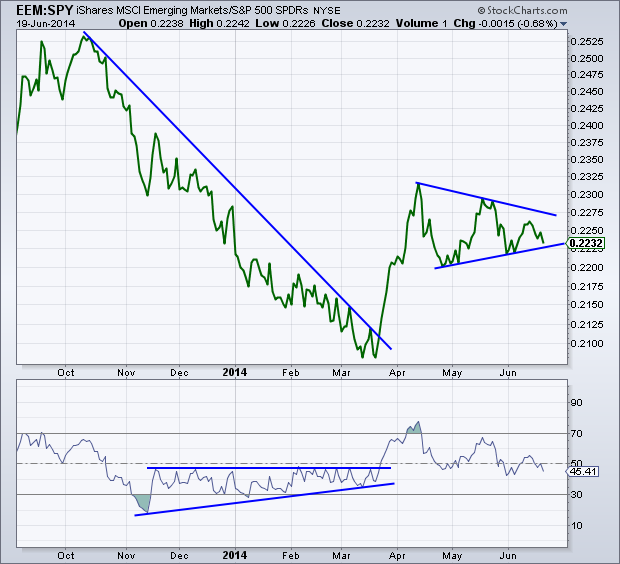The ratio between the iShares MSCI Emerging Markets (ARCA:EEM) and the SPDR S&P 500 (ARCA:SPY) has produced some interesting setups this year. While EEM hasn’t been the strongest performer YTD, by applying some methods of technical analysis we are able to get an idea of where strength may or may not show up.
From the peak in relative performance against SPY last October, Emerging Markets underperformed for the next five and half months. During that time we saw the Relative Strength Index stuck in a bearish range, which supported the down trend in the ratio between EEM and SPY. While a positive divergence in RSI began to develop in January, the momentum indicator was unable to break above overhead resistance until late March. The break in momentum resistance also coincided with the break in trend line resistance for the price ratio. EEM was able to then outpace the S&P 500 for the following month.
Starting in April we can see in the chart below that the ratio between emerging and domestic markets began making lower highs and higher lows. This creates a symmetrical triangle pattern. Oftentimes we see the resolution of this type of pattern to favor the previous trend. But what’s interesting about this particular triangle pattern is that it was formed after a ‘trend’ (if you want to call it that) that lasted just one month. is that really enough time to obtain the overall bias?
I’ll be watching to see which direction this period of consolidation breaks and whether Emerging Markets or Domestic markets are able to win out in the end.

